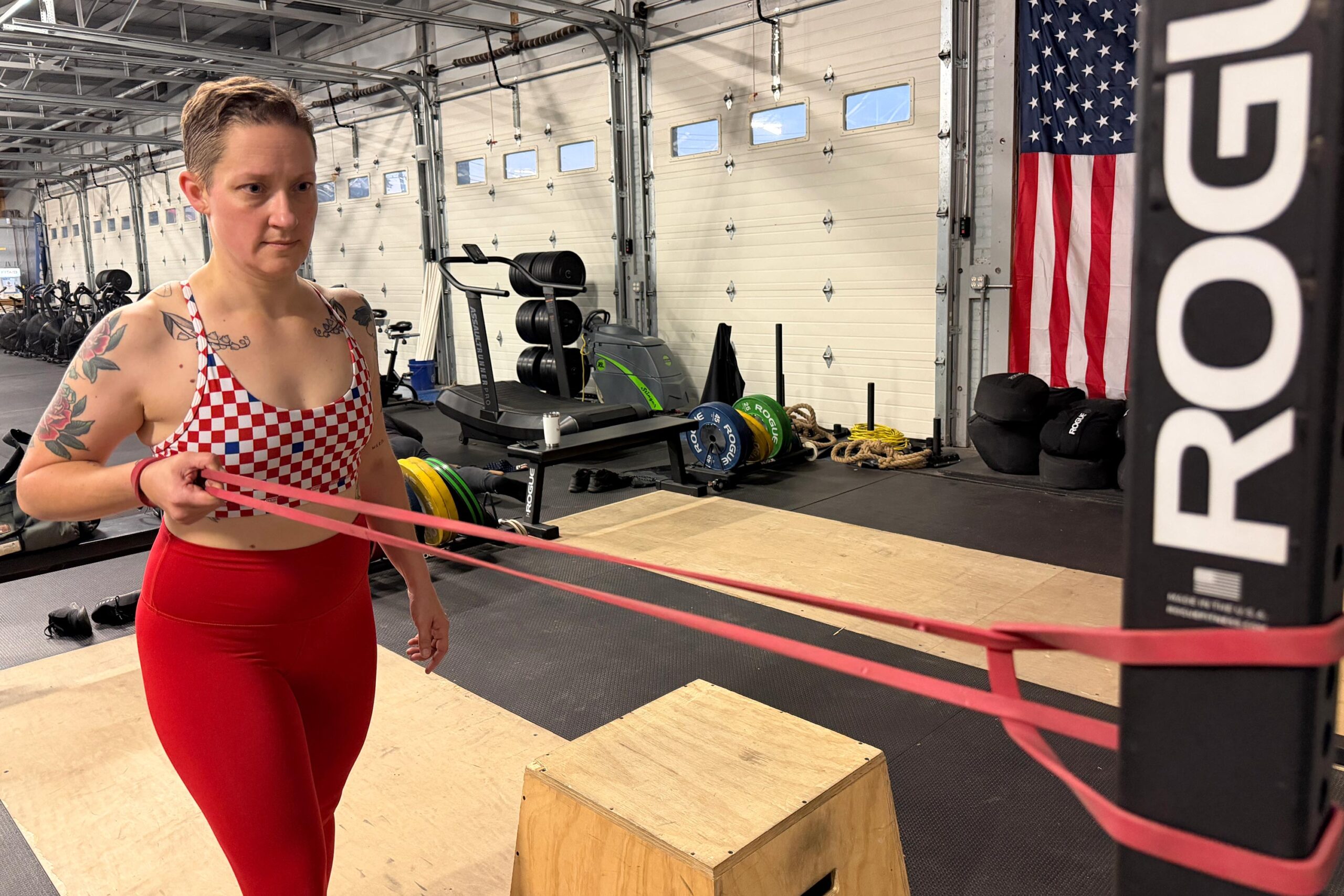Health
Combat Tech Neck: 4 Strengthening Exercises from Experts

Concerns about “tech neck,” a common condition stemming from excessive use of personal devices, are on the rise. This forward head posture often leads to chronic pain and limited mobility. Physical therapist **Patrick Suarez**, based in **Albany, New York**, has identified effective exercises to combat this issue. While many instinctively reach for stretching techniques, Suarez advises against this approach, emphasizing the need for strengthening exercises instead.
Tech neck results from consistently tilting the head forward, which disrupts the body’s center of gravity. This posture is not only prevalent among smartphone users but also among individuals who spend long hours driving. The inclination to hunch forward while using devices or while seated in vehicles can strain neck and shoulder muscles, causing discomfort over time.
According to **Suarez**, overstretching the neck muscles can worsen the problem. Instead, he highlights the importance of strengthening the muscles that connect the neck to the upper back. The following four exercises are recommended to improve posture and alleviate discomfort.
Strengthening Exercises for Tech Neck Relief
1. **Wall Angels**
This exercise enhances mobility and promotes better posture. Begin by standing against a wall, ensuring your lower back, shoulders, and head are in contact with the surface. Keep your core engaged and arms positioned in a cactus shape—elbows at shoulder height and bent at 90 degrees. Gradually slide your arms upward, maintaining contact with the wall, before returning to the starting position.
2. **Thoracic Spine Wall Rotation**
This mobility exercise targets the upper back. Start in a half-kneeling position beside a wall, with your right thigh against it. Place your fingertips behind your ears and rotate your torso to the left until both elbows touch the wall. Pause briefly, then reverse the movement. Repeat on the other side to ensure balanced mobility.
3. **Row Variations**
Strengthening the muscles around the shoulder blades is crucial. For a **single-arm row**, anchor an exercise band at chest height. Stand with one foot forward and grasp the band, pulling it towards your body while squeezing your shoulder blades together. Hold briefly before returning to the starting position. Similarly, for a high-to-low row, anchor the band above your head and pull it down towards your ribs, focusing on engaging the upper back muscles.
4. **Prone I’s, T’s, and Y’s**
These exercises strengthen the upper back muscles, promoting better neck posture. Lie face down on a stability ball with arms hanging down. Raise your arms to form a “Y,” then lower them and lift to form a “T.” Finally, extend your arms behind you to form an “I.” These movements can be performed separately or as a combined set to enhance upper back strength.
Practicing Mindfulness and Posture Correction
In addition to these exercises, being mindful of posture throughout the day is essential. While it may not be feasible to maintain perfect posture at all times, small adjustments can lead to significant improvements. During daily activities, such as driving, **Suarez** advises individuals to sit back fully in the seat, aligning their shoulders and head with the headrest.
The journey to better posture is gradual. **Suarez** emphasizes that it is unrealistic to expect immediate results. Instead, focus on small, incremental changes. By incorporating these exercises into daily routines and being mindful of body alignment, individuals can effectively combat the discomfort associated with tech neck.
Addressing tech neck requires not only awareness of posture but also a commitment to strengthening the muscles that support neck and shoulder alignment. With dedication to these exercises, individuals can experience relief from discomfort, fostering healthier habits in an increasingly digital world.
-

 Business1 week ago
Business1 week agoIconic Sand Dollar Social Club Listed for $3 Million in Folly Beach
-

 Politics1 week ago
Politics1 week agoAfghan Refugee Detained by ICE After Asylum Hearing in New York
-

 Health1 week ago
Health1 week agoPeptilogics Secures $78 Million to Combat Prosthetic Joint Infections
-

 Lifestyle1 week ago
Lifestyle1 week agoJump for Good: San Clemente Pier Fundraiser Allows Legal Leaps
-

 Science1 week ago
Science1 week agoResearchers Achieve Fastest Genome Sequencing in Under Four Hours
-

 Health1 week ago
Health1 week agoResearcher Uncovers Zika Virus Pathway to Placenta Using Nanotubes
-

 World1 week ago
World1 week agoUS Passport Ranks Drop Out of Top 10 for First Time Ever
-

 Entertainment1 week ago
Entertainment1 week agoJennifer Lopez Addresses A-Rod Split in Candid Interview
-

 Business1 week ago
Business1 week agoSan Jose High-Rise Faces Foreclosure Over $182.5 Million Loan
-

 Science1 week ago
Science1 week agoMars Observed: Detailed Imaging Reveals Dust Avalanche Dynamics
-

 Top Stories7 days ago
Top Stories7 days agoChicago Symphony Orchestra Dazzles with Berlioz Under Mäkelä
-

 World1 week ago
World1 week agoRegional Pilots’ Salaries Surge to Six Figures in 2025









